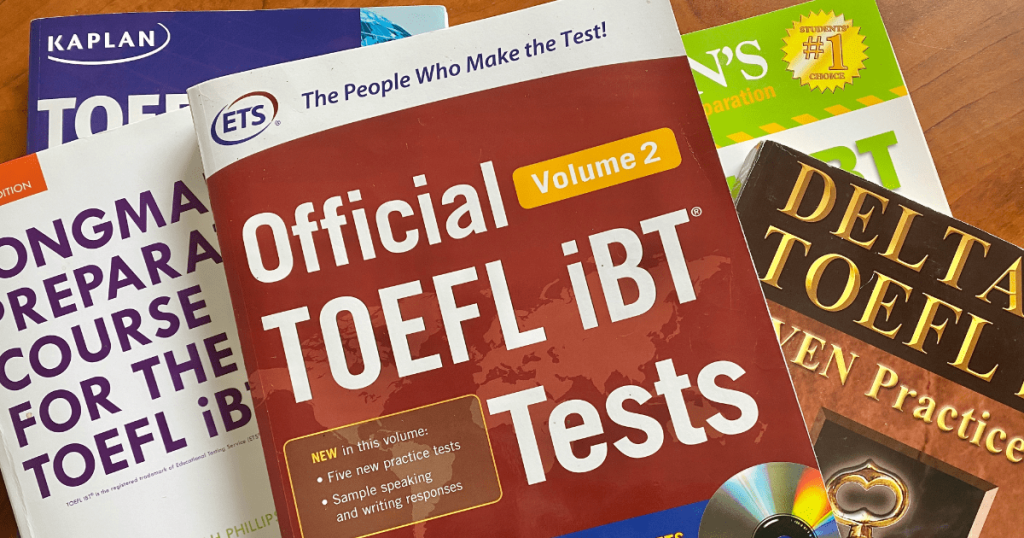【こちらは旧型式の情報ですので新形式のリーディングのコツを参照ください】
下記のリンクより最新の情報にアクセスしてください。

TOEFLライティングの解答例を見てみましょう。
TOEFLはライティングでもリーディング・リスニングとの統合問題が出題されます。
TOEFL ライティングの概要
TOEFL ライティングセクションの概要を確認しておきましょう。
TOEFLのライティング問題は、2つの質問で構成されており、試験時間は合計50分(パート1は20分、パート2は30分)です。
パート1はIntegrated taskと言い、リーディング・リスニングとの統合問題です。
パート2はIndependent taskと言い、ライティング力だけを測定する独立問題です。
コンピューターによるテストなので、タイピングが苦手な人はタイピングの練習もしておきましょう。
TOEFLの他のセクションや、詳しい概要は以下の記事をご覧ください。
TOEFL ライティングテストの問題ごとのポイントと詳しい対策法はこちら。
TOEFL ライティング 解答例
それでは、トーフルのモデルアンサーをサンプル問題と共に確認しましょう。
トーフルの特徴は、ライティング問題でもリスニング・リーディング力が重要になる点、指定されている語数よりも多く書くことです。
パート1 Integrated task (統合問題)
TOEFL ライティングのパート1では、アカデミックなトピックについての文章を読んだ後、同じ話題についての講義を聞いて、ポイントと関連性をまとめます。
どちらもメモを取る必要がありますが、特にリスニングの内容は詳しくメモを取っておきましょう。ライティングは、イントロ・メイン1・メイン2・メイン3・結論の5段落構成で書きます。
制限時間は20分で、文字数は 150~225 words と指定されていますが、TOEFLのライティングは多く書く方が有利なので、250 words を目指します。
それでは、早速実際の問題と解答例を確認しましょう。
パート1 Integrated task 問題例
【リーディング】
-Reading Time: 3 minutes-
The sea otter is a small mammal that lives in waters along the western coast of North America from California to Alaska. When some sea otter populations off the Alaskan coast started rapidly declining a few years ago, it caused much concern because sea otters play an important ecological role in the coastal ecosystem. Experts started investigating the cause of the decline and quickly realized that there were two possible explanations: environmental pollution or attacks by predators. Initially, the pollution hypothesis seemed the more likely of the two.
The first reason why pollution seemed the more likely cause was that there were known sources of it along the Alaskan coast, such as oil rigs and other sources of industrial chemical pollution. Water samples from the area revealed increased levels of chemicals that could decrease the otters’ resistance to lifethreatening infections and thus could indirectly cause their deaths.
Second, other sea mammals such as seals and sea lions along the Alaskan coast were also declining, indicating that whatever had endangered the otters was affecting other sea mammals as well. This fact again pointed to environmental pollution, since it usually affects the entire ecosystem rather than a single species. Only widely occurring predators, such as the orca (a large predatory whale), could have the same effect, but orcas prefer to hunt much larger prey, such as other whales.
Third, scientists believed that the pollution hypothesis could also explain the uneven pattern of otter decline: at some Alaskan locations the otter populations declined greatly, while at others they remained stable. Some experts explained these observations by suggesting that ocean currents or other environmental factors may have created uneven concentrations of pollutants along the coast.
【リスニング】
【問題】
Summarize the points made in the lecture, being sure to explain how they respond to the specific points made in the reading passage.
パート1 Integrated task 解答例
The reading and the lecture are both about theories of the rapid decline in sea otter populations. Whereas the author of the reading states that pollution was the major cause of the decline in sea otter populations, the lecturer suggests that predation is the most likely factor contributing to the reduction in the number of the sea otters. The lecturer casts doubts on the main points made in the reading by providing three reasons.
First of all, according to the reading, the increased levels of pollutants taken from water samples provide evidence for the pollution theory. However, the lecturer disputes this point. He says that if the sea otters had been killed by pollutants in water, they would have been found on shores. Furthermore, he mentions that the absence of dead sea otters on shores indicates that sea otters were killed and eaten by predators.
Secondly, the reading states that aside from sea otters other small sea animals also decreased in population due to pollution. This finding indicates that the pollution is the reason why sea otters are in rapid decline. Nevertheless, the lecturer refutes this argument. He argues that because the whale population decreased, the orcas in the area had to eat otters instead of whales. As a result, the otter population diminished.
Finally, the reading claims that environmental factors, which lead to different levels of pollutant concentration, perfectly explain the uneven pattern of the diminishing sea otter populations. On the other hand, the lecturer believes that the uneven pattern of declining sea otter populations corresponds to the prevalence of orcas in different areas. He thinks that the otter population reduces in places with orcas and there was not a big decrease in otters in places where orcas could not access.
In conclusion, although the reading and the lecture are both about hypotheses of the diminishing sea otter populations, the three main points made in the reading are effectively challenged by the lecturer.
パート2 Independent task (独立問題)
TOEFL ライティングのパート2は、与えられたトピックに賛成か反対かといった自分の意見と、その理由を3つほど述べる問題です。
パート2も、パート1と同様イントロ・メイン1・メイン2・メイン3・結論の5段落構成で書きます。
制限時間は30分で、文字数は最低でも 300 words とありますが、300-380 words を目指しましょう。
それでは、早速実際の問題と解答例を確認しましょう。
パート2 Independent task 問題例
Do you agree or disagree with the following statement?
It is better to use printed materials such as books and articles to do research than it is to use the Internet.
Use specific reasons and examples to support your answer.
パート2 Independent task 解答例
It is critically important that students use the best available resources when they do research. In my opinion, it is far better to use printed materials than online sources. I feel this way for two reasons, which I will explore in the following essay.
To begin with, printed materials such as books and articles are more reliable than websites. This is because websites can be edited easily by anyone, regardless of whether or not they are qualified academics. As a result of this, even articles in popular online encyclopedias often contain incorrect and biased information. My own experience demonstrates the danger of relying too heavily on online sources of information. Two semesters ago, I was assigned a research paper in a freshman history class. I cited data that I found on Wikipedia which later turned out to be completely incorrect. This data was so wrong that my professor spotted it immediately, causing me to fail the assignment and receive a fairly low grade in the class at the end of the semester. If I had taken the time to compare what I had read online to a book or a scholarly article, I would not have included it, and would not have received such a failing score in the class.
Secondly, books are superior to online articles because they cover topics in much detail. Textbooks are significantly informative and detailed than online articles, so they are more useful to students. Those who use them when doing projects can also look at the detailed indexes which they include to focus on very specific topics. For example, when I wrote an essay last semester in a history class, the very first book that I consulted contained a long description of the both the underlying causes and long-term effects of the historical event I was writing about. In contrast, most of the online articles that I consulted contained little more than superficial facts and dates. I based my research on the book rather than these articles, so I was able to write a very insightful essay.
Finally, websites, unlike printed books, do not necessarily have publishers to refer. There are increasing numbers of non-scholarly sites that pertain to particular topics, but are not scholarly sources. Blogs, for example, may cater to a particular topic or niche, but they are typically created and managed by an individual or party with an interest in promoting the content of the blog. To avoid using information that comes from an unreliable unscholarly source, students should stick to library databases at university where students can borrow or copy some articles. University library or databases are the best sources of information students only need.
In conclusion, I strongly believe that printed information is more useful and reliable than online resources, because books and printed journals are less likely to be biased or contain errors and provide a superior level of detail.
TOEFL ライティングの解答例 ポイントまとめ
TOEFLのライティングの解答例を紹介しました。TOEFLのライティングはリーディング・リスニングの統合問題があり、限られた時間で多くの語数を書かなければなりません。
時間を有効活用するため、段落の構成を暗記し、便利なフレーズは覚えておきましょう。
また、ライティングは自分で書くだけでなく、TOEFLを熟知した講師に添削してもらいましょう。
当校ではTOEFLのライティングの添削も行っております。
無料カウンセリング・トライアルレッスンは以下のホームページの「お問い合わせ」よりお気軽にご連絡ください。





